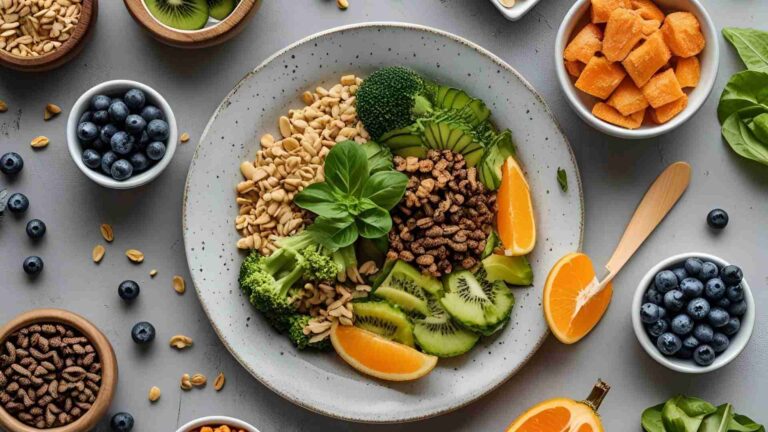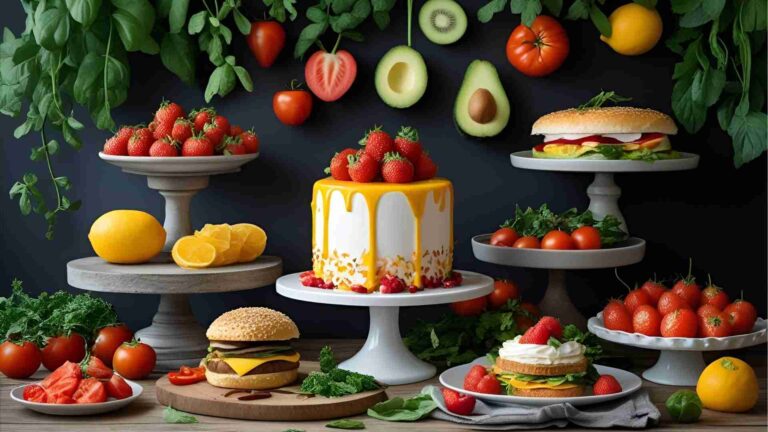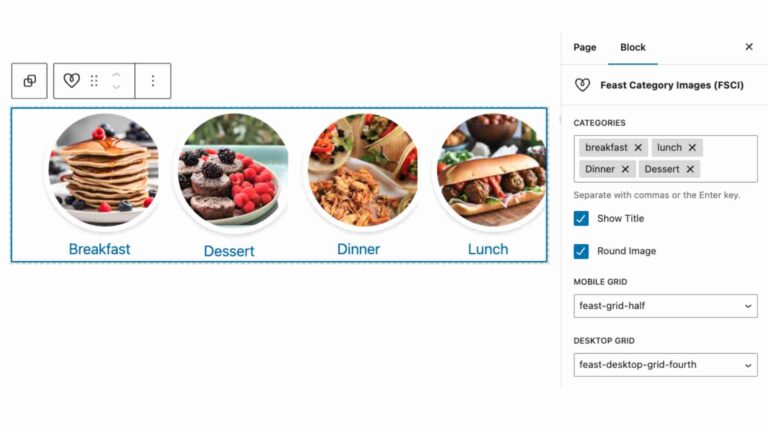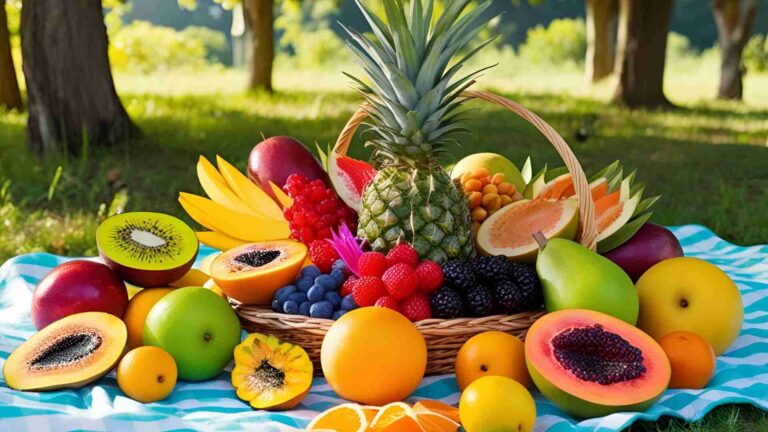Write Food Recipe EBook Blogs Web Content Article
Food bloggers pour their hearts into crafting recipes and stories that resonate with their audience, yet much of this content often fades into blog archives over time. By transforming your blog posts into a recipe ebook, you can extend the lifespan of your content, reach new readers, and create a sustainable passive income stream. This comprehensive guide walks you through the process of converting your food blog into a high-quality recipe ebook, from identifying the right content to designing, pricing, and promoting your final product. With practical strategies and actionable steps, you’ll learn how to monetize your expertise while establishing authority in your culinary niche.
Why Create a Recipe EBook from Your Food Blog?
Recipe ebooks are a natural fit for food bloggers. They allow you to package your expertise into a convenient, valuable product that readers can purchase and reference offline. Here are the key benefits of creating a recipe ebook:
- Passive Income Potential: Once created, ebooks can generate revenue for years with minimal maintenance.
- Authority Building: A well-crafted ebook positions you as an expert in your niche, whether it’s vegan baking, meal prep, or holiday entertaining.
- Audience Engagement: Ebooks meet your readers’ desire for comprehensive, portable content they can access anytime.
- Lead Generation: Gated ebooks can grow your email list by offering high-value content in exchange for contact information.
- Content Repurposing: Leverage existing blog posts to create a new product without starting from scratch.
However, not every blog is ready for ebook conversion. Let’s explore when and how to make this transformation effectively.
When Should You Convert Your Blog into a Recipe EBook?
Before diving into ebook creation, assess whether your blog content is suitable for conversion. Here are the conditions that indicate your blog is ebook-ready:
Your Blog Has Comprehensive Coverage of a Specific Topic
Review your blog’s content catalog. Do you have multiple posts that collectively provide in-depth coverage of a particular culinary topic? For example, if you’ve written extensively about plant-based meal prep, including recipes, shopping tips, and storage techniques, you have the foundation for a cohesive ebook. A series of posts—such as breakfast smoothies, vegan lunches, and quick dinners—can be combined into a comprehensive guide like “The Ultimate Plant-Based Meal Prep Guide.”
Your Content Is Evergreen
Evergreen content remains relevant over time, making it ideal for ebooks. Recipes for classic dishes, meal planning strategies, or baking fundamentals are excellent candidates. Check your blog analytics to identify posts that continue to attract traffic months or years after publication. For instance, a post titled “10 Weeknight Dinner Recipes Under 30 Minutes” that consistently draws readers is a strong contender for ebook inclusion.
Your Audience Wants More
Pay attention to reader feedback. Comments like “Can you compile these recipes into one place?” or “I’d love to save this for later” signal demand for a consolidated format. If readers bookmark multiple related posts or ask for offline access, an ebook meets their needs. For example, if your audience frequently requests holiday dessert recipes, a “Festive Sweets Collection” ebook could be a hit.
You Need a Lead Generation Tool
Ebooks are powerful lead magnets. By offering a gated ebook, such as “20 Make-Ahead Freezer Meals,” you can attract qualified prospects willing to share their email addresses for valuable content. Focus on topics that address significant pain points, like time-saving recipes or budget-friendly meals, to maximize sign-ups.
You Want to Establish Authority
Publishing a recipe ebook elevates your credibility. If you’re known for your expertise in gluten-free baking, an ebook like “Mastering Gluten-Free Pastries” reinforces your authority. Identify topics where you already have a strong reputation—perhaps clients or readers frequently ask for your advice on a specific cuisine or technique.
When to Avoid Ebook Conversion
Not all blogs are suited for ebook conversion. Avoid this strategy if:
- Your Content Lacks Cohesion: Posts on unrelated topics, like Italian pasta recipes mixed with BBQ tips and dessert ideas, create a disjointed ebook.
- Your Content Needs Frequent Updates: Recipes tied to trendy ingredients or seasonal fads may quickly become outdated.
- You Lack Depth: A handful of short posts (under 1,000 words) may not provide enough substance for a valuable ebook.
- Your Blog Relies on Interaction: If your content’s value comes from reader comments or community discussions, a static ebook may fall flat.
Types of Recipe EBooks You Can Create
Once you’ve confirmed your blog’s suitability, choose the ebook type that aligns with your goals. Here are five options tailored for food bloggers:
1. The Definitive Guide
A comprehensive ebook covering all aspects of a culinary topic, such as “The Complete Guide to Vegan Baking.” This type positions you as the go-to authority in your niche.
When to Create: You have 7–10 detailed posts on a topic, like sourdough bread techniques, including starters, kneading, and baking tips.
Example: Combine posts on vegan cake recipes, frosting techniques, and ingredient substitutions into “The Ultimate Vegan Baking Handbook.”
2. The Quick-Start Guide
A concise ebook focused on solving a specific problem, like “30-Minute Weeknight Dinners.” It prioritizes actionable recipes and tips over theory.
When to Create: You have step-by-step posts for time-saving recipes or beginner-friendly techniques.
Example: Transform posts on quick pasta dishes and one-pan meals into “Fast & Flavorful: 15 Dinners in Under 30 Minutes.”
3. The Lead Magnet Ebook
A high-value ebook designed to grow your email list, such as “10 Budget-Friendly Meal Plans for Families.” It must deliver immediate value to justify the email exchange.
When to Create: Your content addresses a pressing pain point, like affordable cooking or kid-friendly recipes.
Example: Compile budget recipes and shopping lists into “Feed Your Family for Less: 10 Weekly Meal Plans Under $100.”
4. The Portfolio Showcase
An ebook highlighting your best recipes or success stories, like “Signature Dishes: My Top 20 Recipes with Stories Behind Them.” It showcases your culinary expertise through stunning visuals and narratives.
When to Create: You have high-performing recipes or reader-favorite posts with strong visuals.
Example: Gather your most popular dessert recipes into “Sweet Success: 20 Desserts That Stole the Show.”
5. The Read Later Collection
A simple compilation of your best recipes in an offline-readable format, like “Summer BBQ Favorites: 15 Recipes to Savor.” It requires minimal restructuring.
When to Create: Your audience wants convenient access to your content for reference.
Example: Package seasonal recipes into “Holiday Feast: 25 Recipes for Festive Gatherings.”
Mining Your Blog for Ebook-Worthy Content
With your ebook type selected, it’s time to dig through your blog to identify the best content. Follow these steps:
Conduct a Content Audit
Create a spreadsheet to catalog your blog posts, tracking key metrics to guide your selection:
| Content Element | What to Track | Why It Matters |
|---|---|---|
| Post Title | Exact title | Quick identification |
| Word Count | Total length | Estimates ebook length |
| Traffic (90 days) | Recent page views | Shows ongoing interest |
| Social Shares | Shares across platforms | Indicates resonance |
| Comments | Number of comments | Reflects engagement |
This audit helps you uncover hidden gems in your archives. For a food blog, focus on recipes with high engagement, such as a “One-Pot Chili” post with 500 shares and 50 comments.
Identify Your Greatest Hits
Sort your spreadsheet by traffic, shares, and comments to find top-performing posts. These are often the backbone of your ebook. For example, a post titled “5 Easy Vegan Breakfasts” with consistent traffic is a strong candidate for a “Vegan Mornings” ebook.
Find Content Clusters
Look for natural groupings of posts around specific themes. A food blogger might notice clusters like:
- Quick Weeknight Meals: Posts on one-pan dinners, slow cooker recipes, and 20-minute pastas.
- Holiday Baking: Recipes for Christmas cookies, Thanksgiving pies, and festive cakes.
- Meal Prep: Guides on batch cooking, freezer meals, and lunchbox ideas.
These clusters can form chapters, such as “Weeknight Wonders” or “Holiday Sweets.”
Address Content Gaps
As you map posts to your ebook outline, identify gaps that need new content. For example, if your “Meal Prep” ebook lacks a chapter on snacks, create a new section with exclusive recipes like energy bites or veggie sticks with dips.
Transforming Blog Content into an Ebook
Blog posts aren’t designed to function as ebook chapters. Here’s how to adapt them for a cohesive reading experience:
Understand the Differences
Blog posts and ebooks serve different purposes. Address these key differences:
- From Standalone to Sequential: Blog posts are independent, but ebooks create a narrative flow. Remove redundant introductions, create transitions, and ensure consistent terminology (e.g., always use “meal prep” instead of alternating with “batch cooking”).
- From SEO-Optimized to Reader-Focused: Replace keyword-heavy phrases with natural language. For example, change “best vegan dinner recipes for beginners” to “Easy Vegan Dinners You’ll Love.”
- From Timely to Timeless: Update outdated references, like swapping “this year’s trending ingredients” with evergreen alternatives. Remove seasonal mentions unless the ebook is season-specific.
Step-by-Step Transformation Process
Follow this framework to convert your blog content into a professional ebook:
1. Define Your Reader’s Journey
Map out the transformation your reader will experience. For a meal prep ebook:
- From: Busy professional struggling to cook healthy meals.
- To: Confident home cook with a system for prepping a week’s worth of dinners.
This journey guides your content decisions, ensuring every recipe and tip aligns with the reader’s goals.
2. Create Your Chapter Framework
Outline your ebook structure:
- Introduction: Highlight the problem (e.g., lack of time for cooking) and promise a solution (e.g., quick, delicious recipes).
- Why It Matters: Explain the benefits of meal prep and the cost of inaction (e.g., stress and unhealthy eating).
- Core Methodology: Present your approach, like a 5-step meal prep system.
- Recipes and Tips: Provide actionable recipes and strategies, organized by meal type or prep day.
- Troubleshooting: Address common challenges, like storage issues or picky eaters.
- Next Steps: Offer guidance on maintaining the habit, such as weekly planning templates.
Map existing posts to this framework and create new content for gaps.
3. Transform Individual Posts
Adapt each post to fit the ebook structure:
- Remove Blog-Specific Elements: Delete phrases like “As I shared last week” or “Comment below.”
- Standardize Voice and Format: Use consistent terms (e.g., “sheet pan” vs. “baking tray”), tone (e.g., conversational), and formatting (e.g., bold for tips).
- Add Transitions: Include sentences like “Now that you’ve mastered breakfast prep, let’s tackle dinners” to connect chapters.
4. Enhance with Exclusive Elements
Add value beyond your blog content:
- Visual Frameworks: Include a diagram of your meal prep workflow using Mermaid.
- Tools: Provide a shopping list template or a meal prep checklist.
- Case Studies: Expand on a blog mention, like detailing how a reader used your recipes to save 5 hours a week.

Designing Your Recipe EBook
A professional design enhances your ebook’s appeal and usability. Here’s how to get it right:
Choose the Right Format
Select a format based on your goals:
- PDF: Offers control over layout and is ideal for lead magnets or printable recipes. Best for complex designs with photos.
- EPUB: Adapts to different devices, perfect for long-form content read on e-readers.
- Markdown: Simple for text-heavy ebooks with minimal formatting.
PDF is the most versatile for food blogs, balancing visual appeal and compatibility.
Design Principles
Follow these tips for a polished ebook:
- Typography: Use serif fonts (e.g., Georgia) for body text and sans-serif (e.g., Arial) for headings. Keep body text at 11–12pt with 1.15–1.5 line spacing.
- Cover Design: Include a clear title, high-quality food photo, and brand colors. Use tools like Canva or hire a designer on Fiverr (starting at $50).
- Interior Layout: Ensure 0.5-inch margins, consistent headings, and special formatting for recipe ingredients and instructions.
Tools for Non-Designers
- Canva: Offers free and paid templates for ebook layouts.
- Designrr.io: Automates content import and formatting, with templates for PDFs and EPUBs. Pricing starts at $29/month.
- Adobe InDesign: Ideal for advanced users, with subscriptions at $20.99/month.
Pricing Your Recipe EBook
Pricing depends on length, value, and platform fees. Here’s a breakdown based on industry examples:
| EBook Title | Pages | Price | Notes |
|---|---|---|---|
| The Blog Hustler | 190 | $21 | Comprehensive blogging guide |
| Sweat It To Shred It | 92 | $50 | Fitness-focused, high perceived value |
| Guide to Meal Prep | 39 | $10 | Short, niche-specific |
Guidelines:
- Short EBooks (5–10 recipes): $5–$15, ideal for budget-conscious readers.
- Medium EBooks (10–20 recipes): $15–$30, balancing value and affordability.
- Long EBooks (20+ recipes): $30–$50, for comprehensive guides with exclusive content.
- Platform Fees: Gumroad takes 10%, Thrivecart is a one-time $495, and ConvertKit varies by plan. Factor these into your pricing.
- Break-Even Analysis: Calculate your time (e.g., 50 hours at $50/hour = $2,500) and costs (e.g., $100 for design). Divide by price to estimate sales needed (e.g., $2,600 ÷ $20 = 130 sales).
Promoting Your Recipe EBook
Effective promotion drives sales. Use these strategies:
- Blog and Email List: Add ebook banners to relevant posts (e.g., a “Buy Now” link on recipe pages). Send a launch email to subscribers with a discount code.
- Social Media: Share behind-the-scenes content, like recipe testing photos, on Instagram Stories. Poll followers on recipe preferences to build hype.
- Waitlist: Create an email signup form months before launch to capture interested readers.
- Cross-Promotion: Partner with other food bloggers for guest posts or affiliate marketing.
Chart: Promotion Workflow
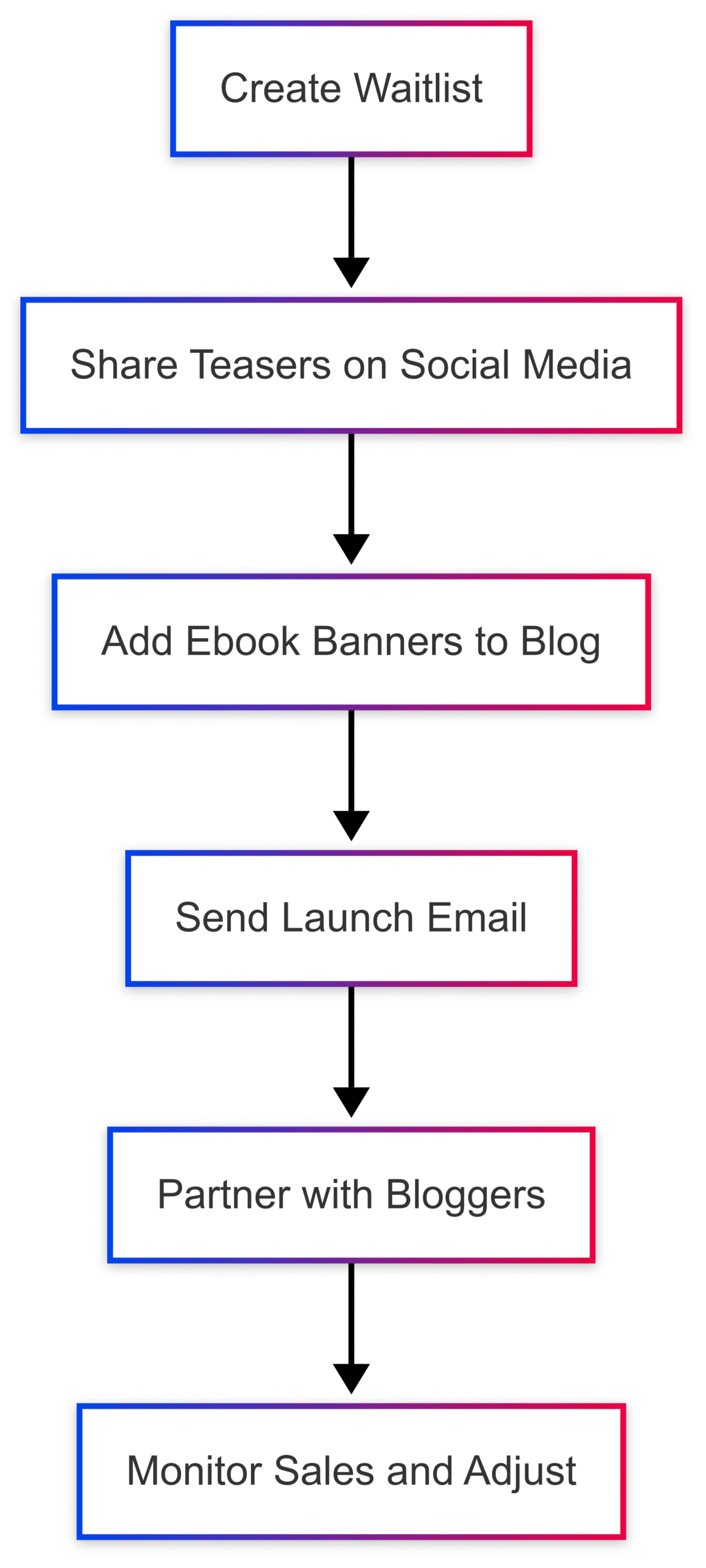
Tools to Streamline Ebook Creation
Automate technical tasks with these tools:
- Designrr.io: Imports blog content, formats it into templates, and exports to PDF/EPUB. Free trial available; paid plans start at $29/month.
- Canva: Free for basic templates, with premium options at $12.99/month.
- Gumroad: Sells ebooks with a 10% fee per transaction. Free to start.
- Teachable: Hosts ebooks and courses, starting at $39/month.
Key Takeaways
Transforming your food blog into a recipe ebook is a strategic way to monetize your content, build authority, and engage your audience. Start by auditing your blog to identify evergreen, high-performing recipes. Choose an ebook type that aligns with your goals, whether it’s a comprehensive guide or a quick-start collection. Transform your posts into a cohesive narrative, enhance with exclusive content, and design a professional product. Price strategically, promote effectively, and use tools like Designrr.io to streamline production.
Action Steps:
- Audit your blog for top-performing recipes and content clusters.
- Define your ebook’s purpose (e.g., lead generation, passive income).
- Outline a reader-focused structure and fill content gaps.
- Design using Canva or Designrr.io for a polished look.
- Promote via your blog, email list, and social media.
Your blog is a treasure trove of culinary expertise waiting to be packaged into a profitable ebook. Which recipes will you transform first? Start today and turn your content into a lasting asset.
Please share these Write Food Recipe EBook Blogs Web Content Article with your friends and do a comment below about your feedback.
We will meet you on next article.
Until you can read, Writing Blog Content That Supports Video Recipes

